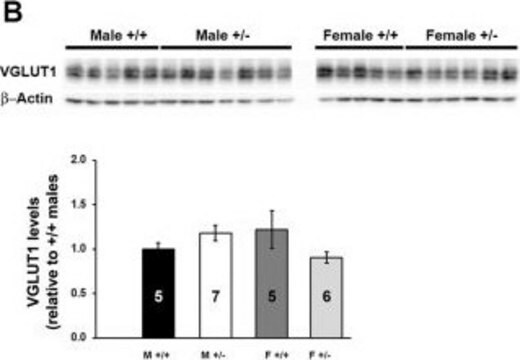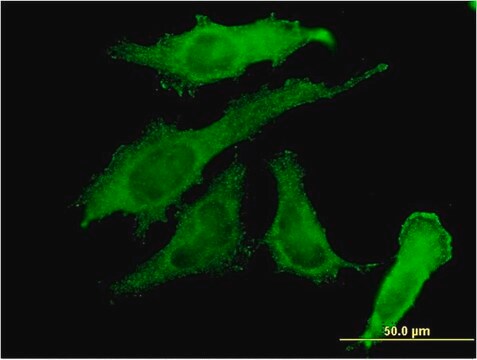ABN1362
Anti-RBPMS Antibody
from rabbit, purified by affinity chromatography
Synonym(s):
RNA-binding protein with multiple splicing, RBPMS, RBP-MS, Heart and RRM expressed sequence, Hermes
About This Item
Recommended Products
biological source
rabbit
Quality Level
antibody form
affinity isolated antibody
antibody product type
primary antibodies
clone
polyclonal
purified by
affinity chromatography
species reactivity
human, mouse, rat
technique(s)
immunofluorescence: suitable
western blot: suitable
NCBI accession no.
UniProt accession no.
shipped in
wet ice
target post-translational modification
unmodified
Gene Information
human ... RBPMS(11030)
General description
Specificity
Immunogen
Application
Neuroscience
Sensory & PNS
Immunofluorescence Analysis: A representative lot detected RBPMS immunoreactivity primarily associated with cell bodies located in the ganglion cell layer (GCL) of paraformaldehyde-fixed mouse retinas by fluorescent immunohistochemistry using whole-mounted retinas (Rodriguez, A.R., et al. (2014). J. Comp. Neurol. 522(6):1411-1443).
Immunofluorescence Analysis: An 1:5,000 dilution of a representative lot detected RBPMS immunoreactivity among cells in the ganglion cell layer (GCL) of paraformaldehyde-fixed mouse retinas by fluorescent immunohistochemistry (Courtesy of Dr. Nicholas Brecha, David Geffen School of Medicine at UCLA).
Quality
Western Blotting Analysis: 0.5 µg/mL of this antibody detected RBPMS in 10 µg of mouse embryonic stem cell (mESC) lysate.
Target description
Physical form
Storage and Stability
Other Notes
Disclaimer
Not finding the right product?
Try our Product Selector Tool.
recommended
Storage Class Code
12 - Non Combustible Liquids
WGK
WGK 2
Flash Point(F)
Not applicable
Flash Point(C)
Not applicable
Certificates of Analysis (COA)
Search for Certificates of Analysis (COA) by entering the products Lot/Batch Number. Lot and Batch Numbers can be found on a product’s label following the words ‘Lot’ or ‘Batch’.
Already Own This Product?
Find documentation for the products that you have recently purchased in the Document Library.
Our team of scientists has experience in all areas of research including Life Science, Material Science, Chemical Synthesis, Chromatography, Analytical and many others.
Contact Technical Service







